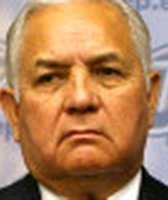Stand up for the facts!
Our only agenda is to publish the truth so you can be an informed participant in democracy.
We need your help.
I would like to contribute
Texas remains home to a greater share of people in poverty than the nation as a whole, Bee Moorhead wrote in a September oped article in the Austin American-Statesman.
Not news? Well, Moorhead, executive director of the Texas Interfaith Center for Public Policy/Texas Impact, also wrote that according to U.S. Census Bureau figures, "Texas once again outstripped the national poverty rate" in 2014, "as we have done since at least 1959."
That’s 56 years--a long time to be better at poverty. We wondered.
And while state/national poverty rates weren't accessible for all the intervening years, this claim mostly held up.
Then again, Lori Taylor of Texas A&M University suggested it’s worth mention that the federal poverty rate has always been calculated by assuming the same income levels put residents in poverty regardless of location, leading to overstatements of people in poverty in lower cost-of-living parts of the country and understatements of residents in poverty in high-cost areas.
Sign up for PolitiFact texts
Taylor and a colleague pointed out in a December 2014 article that in 2013, per the government's poverty threshold, a family of four with two children and a household income of $23,624 was classified as poor regardless of whether the family lived in rural Arkansas, where a typical two-bedroom apartment rents for less than $600, or in New York, where a two-bedroom apartment rents for more than $1,400.
In the past few years, the census bureau has been developing its Supplemental Poverty Measure, which reaches its rates by taking into account regional differences in housing costs. And, Taylor noted, the bureau found in its 2013 surveys that Texas and the U.S. had the same 15.9 percent SPM rate. In contrast, the general 2013 poverty rate for the country was 14.8 percent and the Texas rate was 16.9 percent.
By phone, Moorhead agreed that "using a standard measure" of poverty "across the country is insufficient to characterize the complexity of regional economies." But the SPM is a new measure too, she said, and rates haven’t been calculated retroactively to cover nearly all the years included in her Texas-U.S. comparison.







































